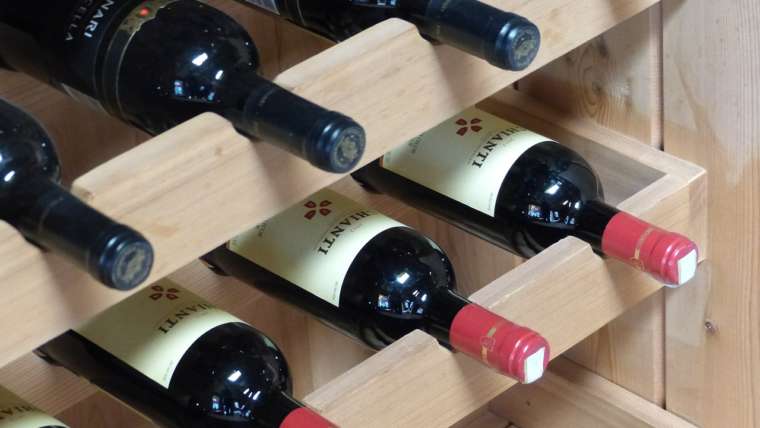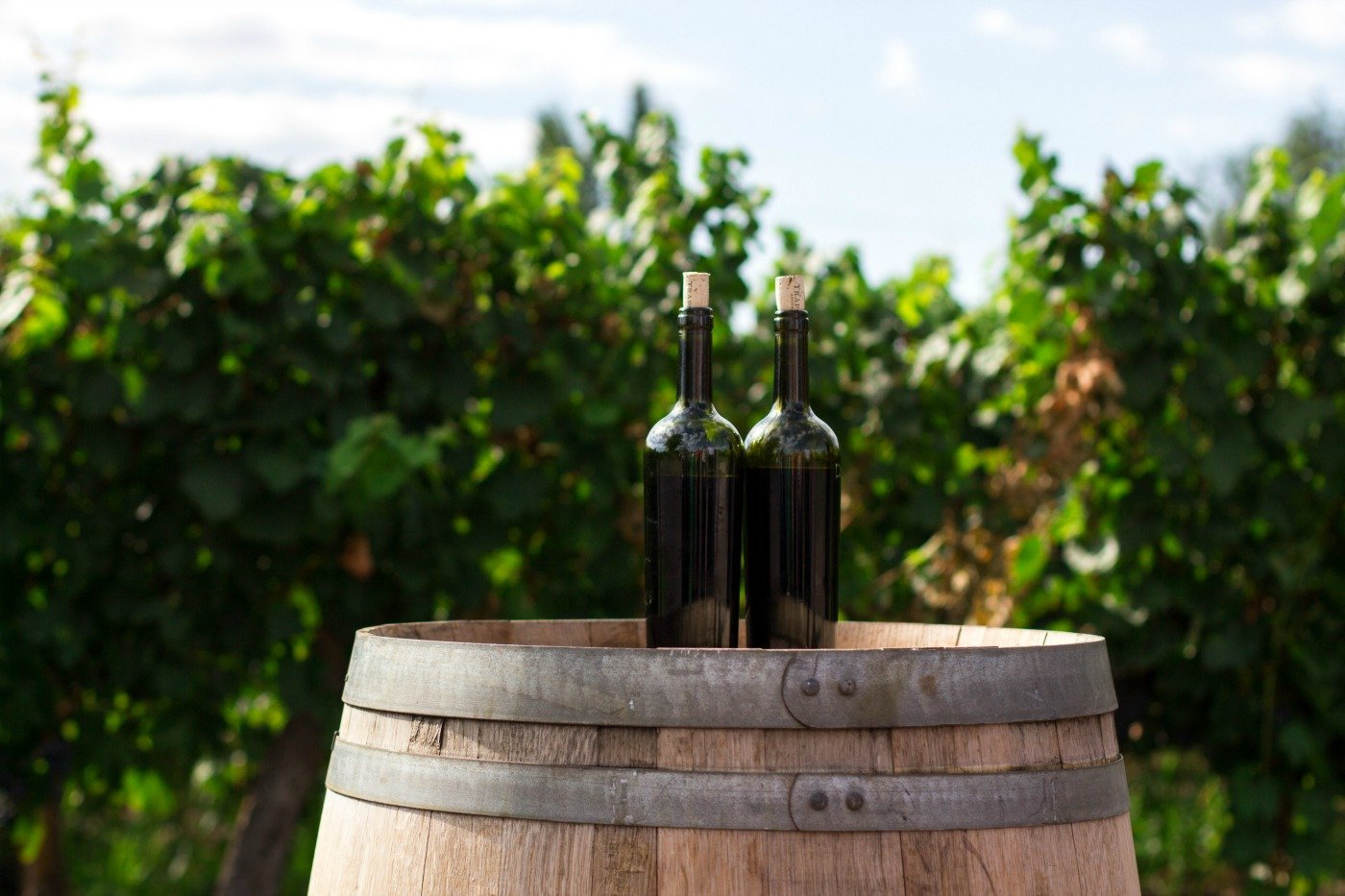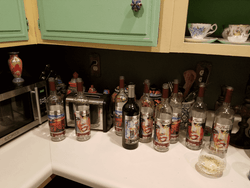How do I store wine? How long can I keep this bottle of wine? These are all questions that come to mind whether you bought wine yourself or received it as a gift. Either way, if you don’t plan on drinking it right away there are some “best practices” to follow to keep your wine tasting its best for the long haul.
General Rules for Storing Wine
It may come as a surprise but most wine varietals only last for a couple of years after they are released. Honestly, only a small number of fine wines benefit from long-term aging and most store-bought wines are sold ready to drink and don’t benefit from the aging process. If you plan on drinking your wine rather quickly, keeping it in the refrigerator is fine but if you want to keep it long-term, continue reading to get the most out of cellaring wine.

Examples of wines that benefit from aging:
- Pinot Noir
- Syrah
- Riesling
- Chardonnay
- Zinfandel
- Vintage Ports
- Merlot
- Cabernet Sauvignon
- Sauvignon Blanc
Examples of wines that do not benefit from aging:
- Rosés
- Vermouth
- Sherry
- Moscato Spumante
- Nouveau wines
Where to Store Wine in the House
Ok, so, now that you know the basics, let’s talk about the best place to actually store your wine. First of all, you need to find a place that doesn’t get a lot of light. This is because phenolic compounds within the wine react to ultraviolet rays causing degradation.
Additionally, make sure your wine is in a still space. That means away from the kids, pets- even small vibrations from the refrigerator or hot water heater can be dangerous! The theory is that the vibrations can cause an increase in chemical reactions which would result in premature aging and other faults.
Humidity is also a factor that could ruin a perfectly good bottle of wine. If it’s too dry, you may risk the cork dry rotting allowing air into the bottle while too damp promotes mold. My ideal humidity level is 65 percent but don’t sweat it (pun intended) if that’s not an option, anywhere between 50 and 80 percent will work just fine.
Ok, have you ever wondered why wine bottles are always stored sideways? Well, there is a reason for it- and no, it’s not just because they are too tall to fit most spaces! This position allows the cork to remain moist therefore preventing it from drying out. Of course, if you don’t plan to store wine long-term or have a differing closure then it’s not a big deal.
Wine Storage Temperature
Lastly, but agreeably the number one arch-nemesis for your fine wine is temperature! I can’t stress enough how important it is to keep your wines away from heat. But wait, before you run to move your wine to the deep freezer, the other end of the spectrum isn’t your friend either!
While I recommend 57 degrees F as the perfect general temperature to store wine, anywhere between about 45 to 60 degrees F (depending on the wine) may be alright. Leaving your wine anywhere that exceeds 70 degrees or higher could “cook” your wine causing flat aromas, flavors, premature aging, and other faults. On the other hand, while wine has a lower freezing point than water, extreme cold could still freeze your wine. The cold also puts the cork at risk of dry rotting, allowing air into the bottle. The bottle could also expand and crack or the cork could be pushed out thus ruining your wine..
One more thing to keep in mind concerning temperature is ensuring there are no extreme or frequent changes in temperature- it’s all about stability!
With the guidelines above in mind, your kitchen, laundry room, boiler room, and anywhere near windows is ruled out. I know, it doesn’t leave many options but converting a closet or storage area into a space to store wine would work great. Just add some wine storage racks to outfit it.
Obviously, if you plan on buying wine on a regular basis with the intention to cellar wine, then I suggest investing in a wine cooler or portable wine storage unit.
How to Store Red Wine vs White Wine

Generally speaking, there isn’t a huge difference between storing red wine and white wine. If you’re a wine connoisseur, however, it could make a noticeable difference since white wines and red wines have differing levels of tannins. Tannins which are most often come from the grape skins, grape seeds, and oak barrels, play an important role in the aging process. Specifically, they shield against oxidation- so, the higher the tannin levels, the longer a wine can age. This is why red wines can age longer than whites and taste amazing. Red wines are best stored between 55-58°F and have been known to last for 30 years or more. White wines are best stored at a slightly cooler temperature of 45-50°F and typically last for seven to eight years.
Suggested Time to Store Wine
- Beaujolais – 0 to 3 years
- Beaujolais Nouveau – drink as soon as possible
- Bordeaux, Red – 5 to 20 years
- Bordeaux, White – 4 to 10 years
- Cabernet Sauvignon – 5 to 15 years
- Champagne, non-Vintage – 0 to 2 years
- Champagne, Vintage – 5 to 10 years
- Chianti – 0 to 7 years
- Chardonnay – 2 to 6 years
- Merlot – 2 to 8 years
- Gewurztraminer – 0 to 4 years
- Hungarian Furmint – 3–25 yrs
- Pinot Noir – 0 to 5 years
- Port, non-vintage, tawny, etc. – 0 to 5 years
- Port, Vintage – 10-20+ years
- Rioja – 4 to 10 years
- Riesling – 3 to 20 years
- Sangiovese and Barolo – 2 to 10 years
- Sauternes and other sweet whites – 5 to 15 years
- Sauvignon Blanc – 0 to 2 years
- Shiraz – 5 to 12 years
- Vouvray – 0 to 5 years
- Zinfandel, Red – 5 to 10 years
- Zinfandel, White – 2 to 6 years
Click here for more tips on how to store your wine the right way!
Cheers!
Jason McClain, Proprietor
McClain Cellars





